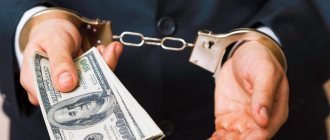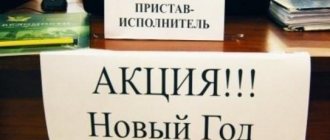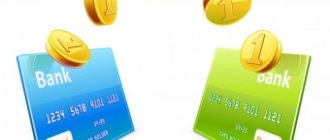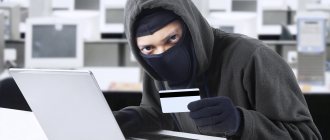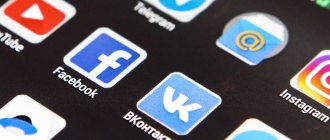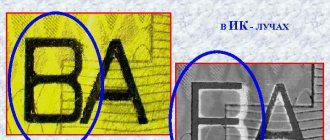Money is an integral part of the economy of any state. Despite the efforts of many countries to move to non-cash forms of payment, paper bills and coins still remain the main means of payment. In cities with a large population, cashless payments are more common due to the creation of the necessary conditions for this. Today, most citizens pay for purchases and services in cash. Why? It's simple. The necessary conditions for non-cash payments have not yet been created everywhere. And this also contributes to the fact that counterfeit banknotes are present in circulation. Counterfeit money, thanks to the improvement of counterfeiting technologies, may be visually no different from real bills. Therefore, any citizen is not immune from the appearance of such a “surprise” in his wallet. In this article we will give some tips on how to recognize counterfeit money.
How are banknotes counterfeited?
Currently, there are many ways to make counterfeit money. They are used by scammers. Forgery does not require any special skills, abilities or costs. All you need is an inkjet printer and paper. Although some methods require additional tools. Despite the improvement in the degree of protection against counterfeiting, fraudsters are also introducing new methods of printing counterfeits. At the moment, the level of skill of criminals has reached great heights. Some counterfeit money can only be distinguished from genuine banknotes using a special device.
What kinds of counterfeit bills are there?
The following types of counterfeit money are distinguished:
- Falsified using special and expensive equipment. The process is complex and expensive. The best materials are used to make money.
- Fake design. Money is issued in different ways. The following devices are involved in the process: inkjet printers; laser printers and photocopiers; screen or offset printing form (printing equipment).
- Partially falsified. They are especially common when counterfeiting new banknotes of a lower denomination and changing them to a larger one by drawing or reprinting zeros.
General signs of difference between a fake and an original
There are several signs that distinguish a fake from the original. Let's look at them. Certain tips on how to recognize counterfeit money can help every citizen. But this is not always possible, since fraudsters have learned to counterfeit banknotes in such a way that only a specialist can distinguish them from the original. Despite this, every citizen is obliged to know the main distinguishing features of a genuine banknote:
- Moire effect.
- Security thread.
- Clearance check.
- Water marks.
- Kipp effect.
Photos of counterfeit money clearly demonstrate counterfeit bills and their differences from the original. The difference may be in the watermark, which is clearly visible on the original, but barely noticeable on the fake. The original contains light and dark watermarks.
How to distinguish counterfeit money from the original? Very good eyesight or a magnifying glass will also help. On the fake there is microtext with its denomination, for example “5000 Central Bank of the Russian Federation”, there is. But it's unreadable. On the original, if you look closely, the microtext is visible. It's quite readable.
Main features of real banknotes
In Russia there are counterfeit paper banknotes from 2010-2015. release. Counterfeit money of an earlier date of manufacture is less common.
5000 rubles
Modifications 5000 rub. attackers make more often. When checking for light, on the right side of the field, a portrait of N.N. Muravyov-Amursky and the numbers 5000 are visible. The numbers on the paper are embossed with micro-perforation, while the holes cannot be felt, the surface is smooth. When examining the distant river bank, it is clear that the drawing consists of graphic symbols.
The height of the number on the right at the top of the sheet gradually increases. A text/number border has been added to the decorative tape at the bottom of the paper sign. At the top and bottom of the bill there are areas with inclined inscriptions repeating the number 5000. On the other side there are 2 stripes with the text “5000” and “CBRF5000”.
An outline image is printed in the margins. When viewed obliquely, some numbers are shifted. On the vertical of the ornamental strip there is a field of one tone. When you turn money, lines of green and red shades appear.
On the decorative tape, when viewed from an acute angle, the letters PP are clearly visible. The coat of arms of Khabarovsk is green, made using special OVMI paint with the ability to move a shiny line. The inscriptions can be easily felt with your fingers.
1000 rubles
Characteristics of real money with a face value of 1000 rubles:
- When tilted, the coat of arms of Yaroslavl changes from crimson to yellow-green.
- The bill shows the appearance of rainbow stripes in different positions.
- When examined in the light, the letters PP and micro-holes with the nominal number 1000 are revealed on the ornament, as well as a portrait of Yaroslav the Wise and the inscription “1000”.
- The following elements are felt:
- tag for people with low vision;
- text “Ticket of the Bank of Russia”;
- emblem of a financial institution.
- The security thread contains separate sections that extend onto the paper surface from the reverse side.
2000 rubles
Denomination 2000 rub. came into use in 2022 and has the best protective properties. The security thread is dark in color, with the inscription “Central Bank of the Russian Federation” repeated on it. The image of the bridge and the digital value are visible on the banknote.
The text “Bank of Russia” is duplicated at the top and bottom on 2 sides. The inscription “Vladivostok” is located at the bottom of the bill and in the surrounding field with the number 2000. Under the text “Two thousand rubles” there is a stripe with repeated numbers.
On the opposite side there is a map of the Far East with compositions of flora and fauna, as well as the denomination. The background contains small graphic components on a space theme. Under the picture of the cosmodrome there is the inscription “Vostochny Cosmodrome”.
At the bottom of the main side of the banknote, the bank indicated a QR code with a link to a section of the official website to familiarize yourself with the signs of the banknote’s authenticity.
If you turn the money, you can find digital movement. When tilted, multi-colored ruble symbols appear, and the denomination is indicated on a plain field with the text “Russia”. The relief of the images is increased. The inscriptions “Two thousand rubles”, “Bank of Russia”, “2000” and edge strokes can be clearly felt.
200 rubles
Signs of a genuine 200 ruble banknote:
- a thread of a dark color with a denomination of a light shade repeated on it;
- 4 sections of thread extending beyond the plane of the paper;
- translucent monument and the value “200”;
- microtext on a green background “Bank of Russia”;
- border frame of the text “Sevastopol”;
- the presence of miniature elements on the reverse side of the bill - the denomination and various patterns of Crimean vegetation;
- light image of the text “Chersonese Tauride” on a dark background;
- rainbow thread visible when tilted;
- relief of inscriptions.
Moire effect
Counterfeit money (photo below) in denominations of 5000, 1000, 500, 100 and 50 rubles can be identified by looking at the rainbow stripes. On a fake they do not change color. On the original, at a certain angle, the color changes. The pattern breaks up into colored stripes smoothly transitioning into one another. They are located on the ornamental stripe on the left of the front side of the bill. Such stripes are very difficult to fake. Therefore, scammers try not to burden themselves with this.
What kind and how many fakes are floating around the world?
According to experts from the Masterforex-V Trading Academy, you should pay attention to: - Euro - annually increases the paper supply by 8-10 percent due to “non-monetary” bills, most counterfeits are 20 and 50 euros. And after a huge number of counterfeit 5-hundred euro notes were imported into the United Kingdom, the government banned their circulation. — The US dollar is one of the most counterfeited currencies, the growth of “not money” is no less than 10–15 percent annually. The most popular bill is 100 “bucks” (90 percent of all “candy wrappers”). Counterfeiting is a constant headache for the FBI, since the dollar has become the world's monetary equivalent and the state currency. the currency of a number of states, and the production of “non-dollars” is occupied by large centers with a conveyor flow. — The Russian ruble is haunted by “self-grown” thousandth banknotes — 95 percent are fakes, with the five thousandth banknote in second place. It is unprofitable to make other money at your own risk, and sales become labor-intensive.
Are there measures against counterfeiting? Undoubtedly. Along with those provided for in the legislation, banks are doing their own - introducing new types of money and degrees of protection, increasing the number and increasing the degree of complexity of copying signs of the authenticity of banknotes. They make bank note detectors available and constantly monitor the circulating supply of money. Nevertheless, although the production of counterfeits takes more and more time to prepare equipment and “develop” ways to imitate security features, counterfeiters do not give up hope and successfully achieve similarity of banknotes with genuine samples. Sales are invariably facilitated by retail trade, where the population does not pay such close attention to checking the condition of pocket money. And with an increase in cash turnover, the risk of being grabbed by the hand is minimized.
Watermark
The watermark on the original appears fuzzy. Its lines look darker and lighter. They are located on the coupon fields of the banknote. On a narrow field the sign is placed in the form of a digital designation of the denomination, and on a wide field a portrait of an outstanding personality is displayed. When examined, watermarks show lighter or darker areas compared to the general background on the paper. These distinctive features can only be seen in the light.
Counterfeit money contains a watermark of one tone. Or scammers do it by cutting out the middle from the original. It is glued onto the fake. The benefits of fraud are double. The criminal receives a counterfeit bill. The trimmed original can be exchanged at the bank. Therefore, any glued banknotes should cause mistrust.
Why are the results of the struggle of the Severe Law insignificant?
One can describe punishments and their intensification in gloomy tones, ranging from deprivation of hands, torture on the rack, and ending with pouring molten metal into the throat - nothing stopped people from criminal activities against the financial independence of states. Neither servants, nor noble people, nor even members of the clergy could pity the executors. The fate of the Ural merchants Demidovs, the Frenchwoman Jeanne de Bologne-et-Auvergne is indicative, and in the 14th century Abbot Messendron was subject to reprisals, but the process of making counterfeits did not stop.
Even some states printed and distributed fake money. Napoleon was the first to carry out this action in the 19th century with the intention of interfering in the economy of England and Russia. Since the First World War, the scale of the issuance of counterfeit money from countries against which hostilities were carried out has assumed enormous proportions, which led to the disruption of the entire economy. At the beginning of the twentieth century, Japan bombed the ruble, and in the middle - the US dollar.
During the Second World War, the German Third Reich “massively attacked” the pound sterling, causing significant harm to the English economy. But no measures were developed or proposed against the secret policy of the entire state, and this was not required, since such actions took place during a declared war and could only be “defeated” by victorious operations on the battlefields.
Sales of counterfeit money
Fraudsters usually sell counterfeit bills in stores and market stalls. But it happens that this also happens in markets, during currency exchange, at gas stations, etc. The sales scheme is very simple. The buyer pays for the goods with a counterfeit bill, either using various tricks or without using them. The fraudster operates depending on the place of sale. If there is a large flow of people in the store, the seller may not notice the fake.
Checking counterfeit money using a machine with an ultraviolet emitter may not yield results. Only an infrared search engine can detect a high-quality fake. In stores and even banks there is a device with an ultraviolet emitter.
Usually there are few such “surprises”, since scammers save on material.
Another way is to sell when purchasing goods, for example, in the amount of 476 rubles. The point is to have coins and a paper bill in the change. The fraudster gives the seller a counterfeit thousand rubles for the goods. The seller gives change of five hundred rubles in paper bills and twenty-four rubles in coins. The buyer, as if by accident, drops the change on the floor. While collecting it, he exchanges the original bill for a fake. Then he asks the seller to change him five hundred rubles at one hundred. Then he gives the seller a bill that is no longer his. He slips in counterfeit money. The seller, unaware of the substitution, exchanges the bill for him. After all, he mistakenly believes that the buyer is giving him exactly the five hundred rubles with which he just gave him change.
Everything you need to know about money
What is money made of, who develops the design of banknotes, does the issue of new banknotes affect inflation - these questions will be answered in the next lecture from the “Financial Environment” series.
It will take place on February 28 at 19:00 in the Library Laboratory at Winzavod at the address: Moscow, 4th Syromyatnichesky lane, 1, building 6, entrance 4 (Center for the Development of Emotional Intelligence). Admission to all lectures in the “Financial Environment” series is free, but the number of places is limited, so it is better to register in advance. To ensure you have enough space, follow the link and register.
Punishment for sales
Criminal law prohibits the production, storage, sale or transportation of counterfeit money. This crime is particularly serious. It encroaches on social relations formed in the financial sphere of the state. Counterfeiting, or counterfeiting money, undermines the economy and the financial system.
This fact is a criminal act with direct intent. Since this crime is especially serious, the maximum punishment for it is over ten years in prison.
What to do with counterfeit money?
If you suspect that you have counterfeit bills on your hands, do not try to quickly get rid of them at the nearest store. There is a very real risk of ending up behind bars. The Criminal Code provides for the sale of knowingly counterfeit money with up to 5 years of forced labor or imprisonment for up to 8 years plus a substantial fine.
If you have any doubts, go to the bank. Specialists will examine suspicious banknotes and, if necessary, send them for a thorough check. If the money turns out to be real, the commercial bank will transfer it to you to the specified account. If it turns out that you came across a counterfeit banknote, alas, its cost will not be reimbursed.
Counterfeits can be turned over to the police. Tell us how and when you received this money, they will send it for examination and begin an investigation. It may be possible to recover damages if you remember exactly where you got the counterfeit banknotes from.
How to behave if you discover a fake?
Many citizens, having discovered counterfeit money in their possession, are in no hurry to contact the police, but try to sell it in order to avoid material damage. Consequently, the victim becomes a criminal under criminal law. Therefore, every citizen who discovers a fake is obliged to contact the police department.
If you receive a banknote whose authenticity you have doubts about, you must contact any bank branch. Employees of the institution are required to check the banknote for authenticity. If necessary, you can order an examination of the banknote. If your copy turns out to be fake, the bank employee puts a special stamp on it “Fake” or “Exchange Refused”, as well as the date, his last name, first name and patronymic, the name of the organization and signature. He then calls law enforcement officials. If a bank employee doubts the authenticity of a banknote, he is obliged to draw up a special certificate, entering into it the data from the copy. Such a document is issued to the client. The bill is handed over to law enforcement agencies for examination. If the banknote is recognized as genuine, it is returned to the owner.
If a counterfeit bill is discovered by an employee of a store, pharmacy, service organization, etc., he does not have the right to seize or destroy it. The police are called upon this fact.
How much counterfeit money is there in Russia?
The Bank of Russia regularly publishes data on the number of counterfeit bills and coins detected in the banking system. In 2022, a total of 45,313 counterfeit banknotes were found. For comparison: in 2016, 61,046 fakes were discovered.
The most counterfeited banknote is 5,000 rubles, but counterfeiters are least interested in paper tens and coins of the same denomination. The Central Federal District leads in the number of detected counterfeits, followed by the Southern and Northwestern Federal Districts.
Where the money comes from, who controls its quantity and how much there should be in the country, you can find out on the website fincult.info.
What are the difficulties in combating counterfeiting?
This method of business is the most profitable, highly organized, and all conditions have been created for it.
• In many areas the law is absent and inactive: in Russia in the recent past - the mountain forests of Chechnya, dollars and euros are printed by the Palestinian Authority, printing houses in the jungles of Colombia. Bases for replicating banknote dolls are easily transferred from one place to another, local criminals ensure their safety and inviolability, and “specialists” are able to issue currencies of not only the USA, Europe, but also Israel, Jordan, Egypt and any others with consistently high quality. • Backward areas (the Baltic states are such for the Old World) became a source of not only labor, but also flows of counterfeit money. For Russia, the most dangerous area for counterfeiting has become the North Caucasus, which is managed by a center of Georgian volunteers. • The economic crisis itself only fuels the production and sale of counterfeits. Confidence in banking systems is falling, society prefers cash, more and more money is concentrated on hands - all this increases the risk of receiving “unsecured” pieces of paper. Thus, in all centuries there have been and exist fakes. Today there is no solution to this problem; too many things contribute to this and there are too many people and even states interested in this. The population's desire to hold money in their hands and enjoy its rustling or ringing is too great. Distrust in banks is too exposed, fears of losing savings accumulate and the desire to possess rather than use persists. Therefore, we have to accept the fact that sooner or later everyone will have to “purchase” fakes and hold fakes.
The Exchange Leader magazine and Masterforex-V Academy experts are more persistently calling for a reconsideration of the attitude towards electronic money as the main alternative to coins and banknotes. Consider cyber money as the most likely future and secure method for all types of payments. Despite the fact that this form of payment is still accessible to various types of hackers, the ability to carry out virtual financial transactions provides a guarantee of money control. The day is not far off when methods will be developed and implemented to prevent any kind of fraud, and then the economies of countries will be protected by the state from the interference of individuals, criminal groups and even hostile powers and military-political blocs.
Sergey Krupenin , Brainity expert
Quantity
| A | A | A |
| Material rating: | (1) |
All materials
Comments
Dominov
04.12.2010 09:00:50
Maybe with the widespread introduction of electronic payments and plastic cards, the relevance of the topic will decrease? The article is very informative! Thank you.
maruzella
05.12.2010 22:46:00
That's right, you need to virtualize your money. Then there will be nothing to fake!
Counterfeit money as a weapon of war
Counterfeit money is a weapon that has been used to fight wars for centuries. Napoleon, Hitler, and the CIA did not hesitate to use it for their own purposes. And in the conditions of today’s confrontation between Russia and the West, one should not delude ourselves that the problem of counterfeit money is not very relevant for our country.
Counterfeit money is rarely discussed in Russia today. Probably partly because, according to Bank of Russia estimates, there are few such people in our country. Thus, at the end of 2022, 38.5 thousand counterfeit ruble banknotes were identified, which, as the Russian Central Bank proudly announced, is 15% lower than the previous year. It should be recognized that counterfeiting Russian banknotes is very difficult, since the latest generation of domestic banknotes have reliable security - one of the best in the world (along with US dollars).
If you believe the information from the Central Bank, things are going quite well with the banknotes of other countries in Russia. Thus, for the entire 2022, only 2,579 counterfeit banknotes of foreign origin were identified. It is noteworthy that 2,352 of these are American dollars (almost exclusively $100 bills).
But do not delude yourself that the problem of counterfeit money is not very relevant for Russia.
Because there is much more counterfeit money actually circulating in Russia than there are detected counterfeits. It must be borne in mind that the overwhelming majority of the same 100-dollar bills are not in circulation; they are hidden in safes, safe deposit boxes and under the mattresses of Russian citizens. Therefore, they do not pass through the verification filters. And checking banknotes through bank cash desks is considered relatively reliable. Checking in stores, cafes and other similar organizations does not always allow one to identify counterfeits.
There is much more counterfeit money than detected counterfeit money. It must be borne in mind that the overwhelming majority of the same 100-dollar bills are not in circulation; they are hidden in safes, safe deposit boxes and under the mattresses of Russian citizens. Photo: Ivan Damanik / Globallookpress
Also, at any moment, counterfeit banknotes can suddenly hit the Russian economy. Counterfeit money is a weapon that has been used to fight wars for centuries. And the significance of these weapons today is no less than, say, in the last or the century before last.
Tensions between Russia and the West are progressing. In fact, they declared war on us. And in this situation, one cannot discount the possibility of the West using such weapons as counterfeit money. Which, as experience shows, were used by states to wage wars in three ways.
Firstly, with the help of such money the intelligence network of the aggressor state could be financed on the territory of the country that was planned to be captured.
Secondly, large quantities of counterfeit money could be thrown into the economy of the enemy country in order to disorganize its monetary circulation (depreciation of the local currency and provoking inflation and hyperinflation).
Thirdly, with the help of counterfeit money, the aggressor country could pay in the occupied territory the costs of maintaining its armed forces and even orders for the production of weapons and equipment.
It is well known that more than two centuries ago, Napoleon, having invaded Russia, actively used counterfeit paper rubles to pay the local population for troop billets and to purchase food and fodder. Historians claim that the fakes (they are called “Napoleonics”) were made in large quantities in France even before the start of the campaign to the east and, according to Napoleon’s plans, they were supposed to disrupt monetary circulation in Russia. Indeed, by the fall of 1812, the real value of the Russian assignation ruble was only 25 kopecks. True, it was not only Napoleon’s money that contributed to this depreciation, but also the “printing press” of the Russian treasury (more precisely, the State Assignation Bank).
In preparation for and during World War II, Hitler flooded many countries with counterfeit money. The Soviet Union was no exception. The exact number of counterfeit Soviet rubles printed remains unknown, but apparently there were a lot of them. By the way, one of the official grounds for carrying out the monetary reform in the USSR in 1947 was the presence of a significant number of German counterfeits in circulation.
Operation Bernhard is considered a textbook example of how the Third Reich tried to use counterfeit money to undermine the enemy’s economy. It was named after its leader, SS Sturmbannführer Bernhard Kruger. The essence of the operation was to organize a large-scale issue of British pounds sterling cash. The operation was super secret, so the production of counterfeit money was organized on the territory of the Sachsenhausen concentration camp, located in the German city of Oranienburg.
At this top-secret enterprise, deployed in two barracks of a concentration camp, at first 40 people worked, then the number of personnel was increased to 140 people (almost all were professionals in their field: printers, engravers, artists, bank employees). From mid-1943 to mid-1944, an average of about 65 thousand counterfeit bills were produced every month on six printing presses. According to some estimates, a total of £300 million worth of “products” were produced. True, there were a lot of marriages. 125 million pounds were usable. And this is approximately 10% of the value of cash banknotes that were then in circulation in England.
It was originally planned that counterfeit bills would be dropped from airplanes over England. This option was then abandoned. It was decided that counterfeit money would be sent to the islands of Foggy Albion through neutral countries through smuggling channels or through illegal currency transactions. The organizers of the operation failed to undermine the circulation of money. But for financing the purchase of weapons and equipment, counterfeit pounds were very useful. Through its agents in banking circles, Switzerland was able to convert counterfeits into real Swiss francs, and partly also into US dollars. Counterfeit pounds were supplied to German intelligence agents around the world, as well as to the armed forces of Hitler’s supporters in Italy and the countries of southeastern Europe.
In 1944, the Third Reich began preparing an operation as part of an economic war against the United States using counterfeit dollars. The training was carried out by the same specialists who were involved in Operation Bernhard. The initial production capacity was expected to cost $1 million per day. However, unforeseen technical difficulties arose (unacceptably low quality of the fake). The first batch of counterfeits was produced only in March 1945 - about 6 thousand 100-dollar bills. The military ring around Germany was rapidly shrinking, and things did not come to the point of selling dollar counterfeits.
In the post-war world, the United States began to resort to using counterfeit money as a weapon. Washington's operation against Iraq is a textbook example here. Since the early 1990s, large quantities of counterfeit currency - both local and American dollars - have been poured into this Middle Eastern country. There was so much clear evidence that even the New York Times published an article in 1992 with the headline “Counterfeit Money Attack Aims to Destroy Iraqi Economy.”
And here is an interesting article by Norwegian anti-globalization expert Terje Maloy entitled “Real fake helicopter money - the CIA is engaged in counterfeiting in order to destroy national economies,” published in 2017 in the publication Global Research. The author of this material first of all recalls the same Iraq: “The Iraqi economy is the target of a destabilization campaign led by the United States. To do this, they are trying to flood the country with huge quantities of counterfeit currency, say Arab and Western officials... Counterfeit bales of counterfeit dinars are being smuggled across Jordanian, Saudi, Turkish and Iranian borders to undermine the Iraqi economy, officials who closely monitor the situation in Iraq have said. These officials believe that in addition to local money, counterfeit dollars are flowing into Iraq to further confuse the banking system. The officials, who insist on anonymity, said Western countries, Saudi Arabia, Iran and Israel are involved in this economic sabotage.”
The counterfeit money that the Central Intelligence Agency and other American intelligence agencies use to undermine the economies of unwanted states literally turns out to be “helicopter money.” The article in question states that in Yugoslavia in the 1990s, counterfeit money was dropped by United States helicopters in the southern swampy areas.
The possibility of the West using such weapons as counterfeit money cannot be discounted. Photo: Ivan Damanik / Shutterstock.com
In Afghanistan, through CIA channels, about $2 billion worth of counterfeit American banknotes were transferred to the Mujahideen (as part of Operation Cyclone, which was carried out in the 1980s).
According to the Norwegian expert, the reasons for hyperinflation in Zimbabwe at the end of the last - beginning of this century should not be sought in the inability of local authorities to manage the economy (as it was and is presented by the Western media). And the fact is that the American intelligence services organized the injection of large quantities of counterfeit money into this African country.
Terje Maloy and other experts name countries where counterfeiting has reached large scales. Most of them specialize in issuing counterfeit dollar bills. Especially $100 bills. These are North Korea, Iran, Peru, Venezuela. Also called countries where an increased level of circulation of counterfeit dollars is recorded. These are Poland, Ukraine, Israel and some other countries.
A large number of legends and versions have arisen around the activities of producing counterfeit money in North Korea and Iran. Many people are surprised by the high quality of counterfeit dollars produced in these countries. Sometimes such banknotes turn out to be even higher quality than those that come off the printing presses of the US Federal Reserve System (in America, banknotes are produced at two enterprises). This is where the term “superdollars” even came from.
And here legitimate doubts arise that North Korea, Iran and some other countries could independently organize the production of counterfeit American banknotes. Once upon a time, the DPRK and Iran actually had machines for issuing dollar bills. There is quite a lot of direct and indirect evidence on this matter. Thus, North Korea at one time (in the 1970s) received such equipment from the GDR. However, much water has passed under the bridge since then. The equipment has long been depreciated. And America has replaced its banknotes and reached a new level of their protection. Let me remind you once again that dollar bills today are considered one of the most secure banknotes in the world.
And here different versions of explanations arise.
One of them boils down to the fact that the information (including official reports from Washington) that there is a large-scale production of counterfeit dollars in the DPRK and Iran is nothing more than fake (disinformation). Why does Washington need such disinformation? And in order to avert the suspicion that it is the United States that produces counterfeit dollars. As the saying goes: “Who shouts ‘stop the thief’ the loudest? The thief himself." Who exactly in the USA can produce such counterfeit dollars? The first version is the US Federal Reserve. It is under her control that there are two enterprises with equipment for printing banknotes. The second version is the American intelligence services, which, in fact, need counterfeit dollars to conduct operations around the world. But I think that, most likely, a secret alliance has long been formed between the US Federal Reserve and the American intelligence services, within the framework of which practical problems of organizing the production and use of counterfeit monetary products are being solved.
Note that it is the US Federal Reserve and the American intelligence services that form the backbone of the “deep state”, which invisibly manages (or at least tries to manage) America’s domestic and foreign policy. And for this you need money. I have already partially touched upon the topic of “shadow government” and its financing in my publications. These include gigantic amounts of budget funds that end up in the Pentagon (part of it is also part of the “deep state”) and, under the cover of secret articles, are used for the purposes of the “deep state.” This includes income from the drug business (covered throughout the world by the Central Intelligence Agency). Finally, these are fake dollars.
Where exactly can the “shadow government” organize the production of counterfeit dollars? Probably, first of all, on the territory of the United States itself. And only then the counterfeiters’ products reach the right places in the world through various channels. Some experts think so.
Others, however, believe that organizing large-scale production of counterfeit dollars in the United States is associated with great risks (opponents of the “deep state” - and there are many of them in America - can identify underground production facilities nearby). Therefore, it is better to establish production where high protection of clandestine production from prying eyes can be ensured. By the way, these are the conditions, paradoxically, that exist in North Korea. This all sounds almost unbelievable. But the version that the “deep state” organized the production of counterfeit dollars in the DPRK is supported by several experts.
Where exactly can the “shadow government” organize the production of counterfeit dollars? Probably, first of all, on the territory of the United States itself. Photo: Volodymyr Horbovyy / Globallookpress
One of them is quite well known to Russian readers. This is the Italian politician and publicist Giulietto Chiesa. He has more than once drawn the audience’s attention to the prohibitively high number of counterfeit dollars in Ukraine. It should be noted that they are of high quality, that is, they are “super dollars.” The Italian in his article “The Third World War has already begun. Against the Russians! writes: “My latest discovery: where does all this money come from? I knew that the US produces $85 billion every month out of nothing. They are created by computers. They pay their debt with money that they produce artificially, from scratch. $100 bills are made... in North Korea! There are three places where the US makes its money: two are in America, and the third is in North Korea, near Pyongyang. This is an entire city surrounded by North Korean intelligence services, the 69th Division. An entire dollar production base has been created there. These are gorgeous real American dollars.
True, not entirely real: there is such an expression “same-same but different” (this, but not that. – Author’s note ). They are not fake and they are fake at the same time. This is tens of billions every month. Why do Americans make money there? Because North Korea is the most isolated country in the world. This is how they keep the Korean dictators in power. The most important thing is that they create secret funding for all US secret services - the CIA, NSA and so on. To do this, you don’t have to go to the US Senate and ask for increased costs. Perhaps President Obama himself knows nothing about this. They thus freely, outside of congressional control, fund the CIA. Where does this money come from for Ukraine? And to finance the “free” Syrian army? From there, from North Korea! They can buy an entire army this way. Do you still think that you live in a civilized world?! This is a crime that is in power, has money and can kill or buy an entire government.”
Giulietto Chiesa, a friend of the Russian people and worried about the fate of Russia, rightly warns us: be prepared that such dangerous weapons as counterfeit dollars can be used against your country. And I will add on my own behalf that the danger of these weapons does not depend on where they were produced - in North Korea, the United States or any other country.

